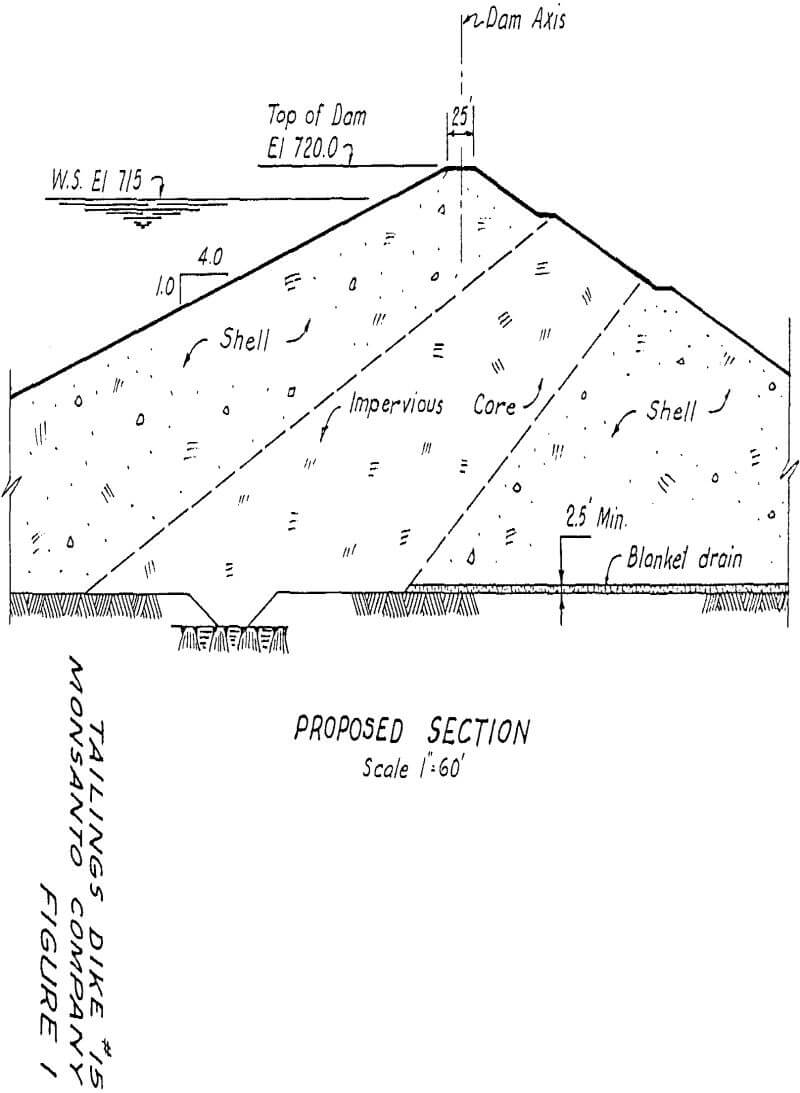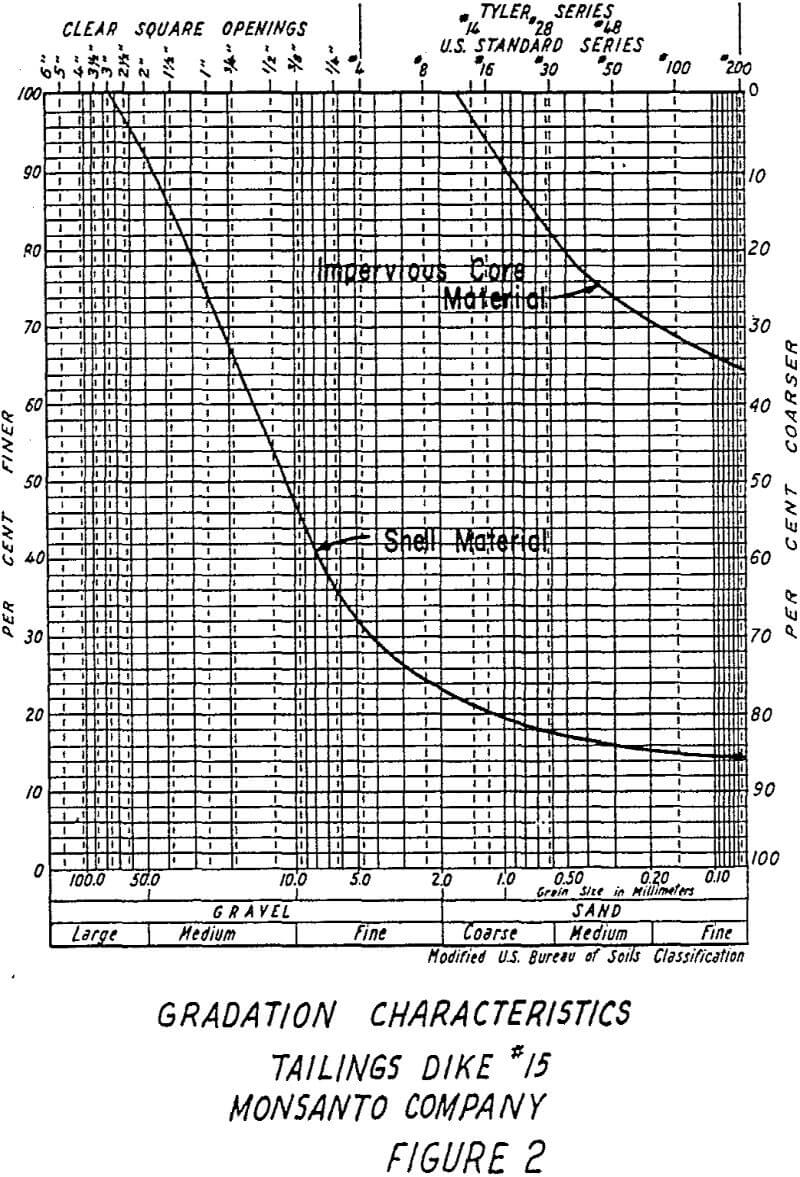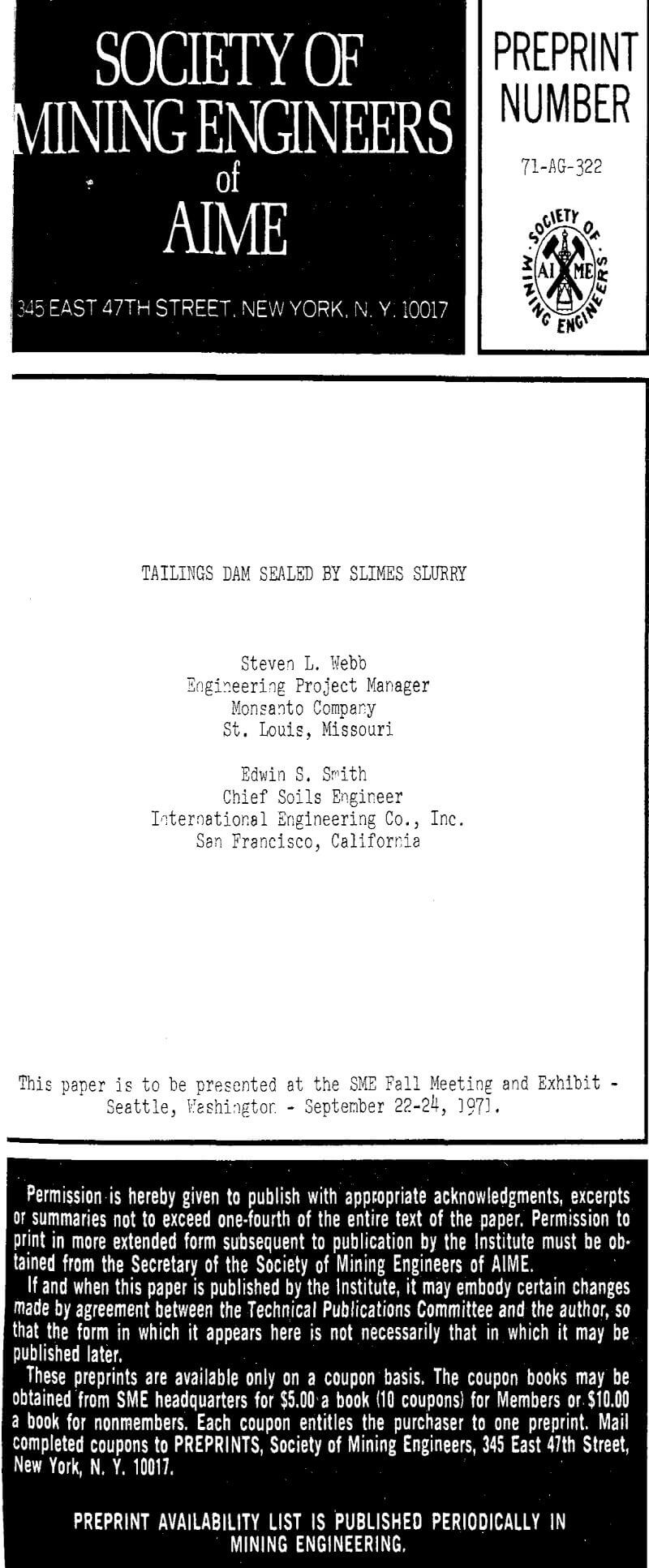In 1965, Monsanto started planning of a new dike (No. 15) for use in disposing of ore tailings at its Columbia, Tennessee phosphorus plant. Generally, in the phosphorus industry only clay tailings are produced making it necessary to borrow fill for construction of a retaining dike. Borrow area investigations indicated that weathered shales and limestones adjacent to the dam site would provide adequate construction materials. It was proposed that the more clayey weathered shales would be used for the impervious core and the more granular weathered limestones would be placed in the outer shell of the dike.
Reduction of seepage through an embankment by approximately 30% was successfully accomplished by a technique of allowing tailings fines to be transported into the embankment materials. The bulk of these fines were in the 0.5 – 0.01 micron size range. The advantage of the method is its self-healing quality, i.e., as the tailings level of the impoundment rises the clay fines percolate into pervious areas of the embankment, thus sealing it. The technique used by this work, however, was to accelerate the healing process by artificial placement of fines on the embankment face at pond levels well above the tailings layer.
Seepage on the downstream face of the dike was noted about half way between the crest and toe, with the saturated face extending across most of the dike. The toe berm was generally quite dry, indicating that the seepage in this area was being intercepted by the gravel blanket drain under the downstream portion of the fill.
To determine the efficiency of applying a slurry to the upstream face to reduce seepage through the dike, a small test fill was constructed in a gully adjacent to the dam. Free-draining slag from the nearby plant was used to form the gravity, zone of the test dike, with a relatively thin layer of weathered limestone placed on the upstream face of the gravity zone. This material was specially selected, using gradation criteria that would ensure permeability characteristics representative of the more pervious weathered limestone layers in the existing dike
Soon after pumping started, narrow streams of thick mud slurry flowed down the face of the dam. To ensure complete coverage, two passes were made over the test area with the slurry discharge manifold. The first pass was made by discharging thick slurries at operating stations 15-feet apart. The second pass was made by positioning the manifold at intermediate stations and, to ensure full coverage, pumping continuously while moving slowly between stations. Pumping rates were estimated to be between 400 and 500 gpm.
Samples of water were collected for analysis from the downstream face of the dam, and gave no indication of tailings migrating through the embankment with the percolating water. The clayey gravel embankment material effectively blocked clay particles that infiltrated the seepage paths, and this action, together with the sealing layer of mud on the face, has resulted in the decreased seepage.



